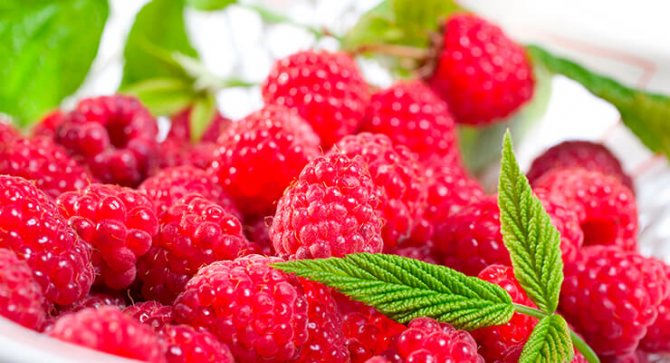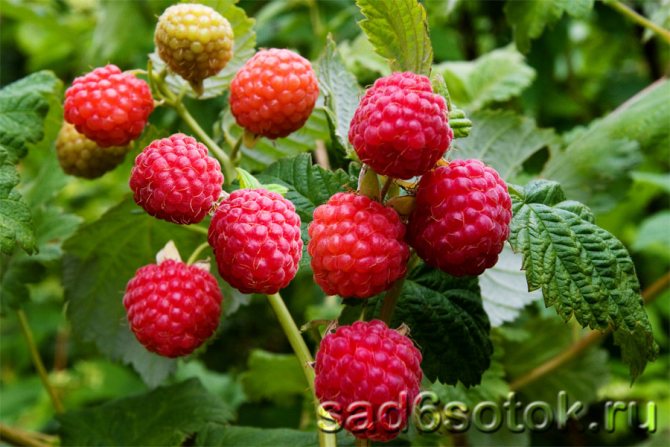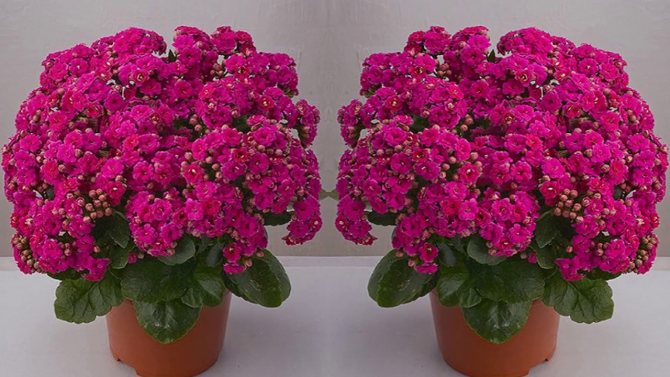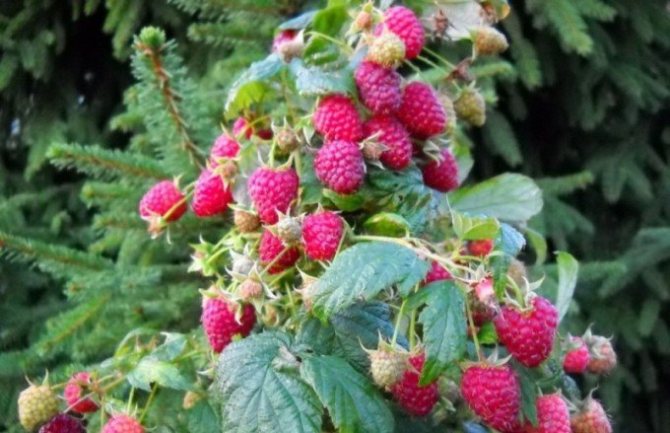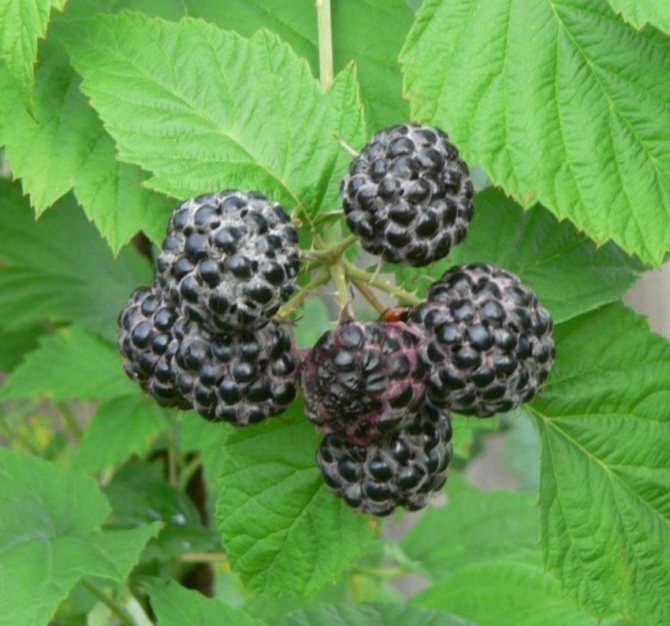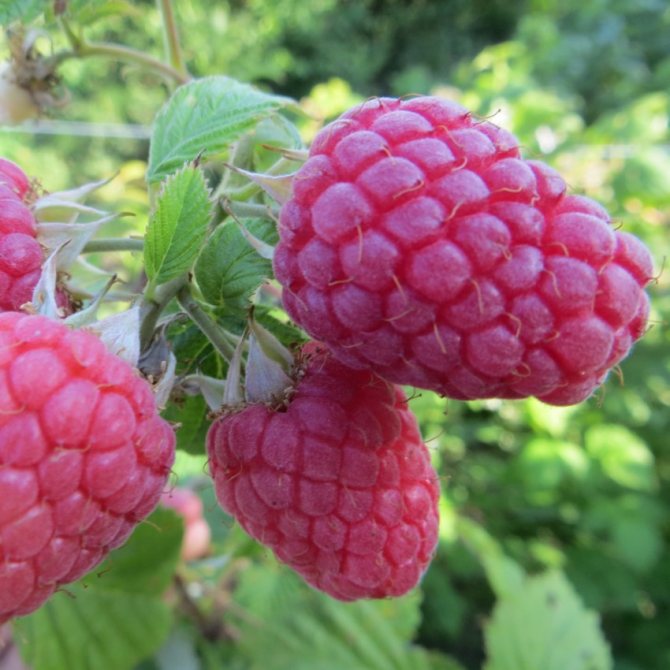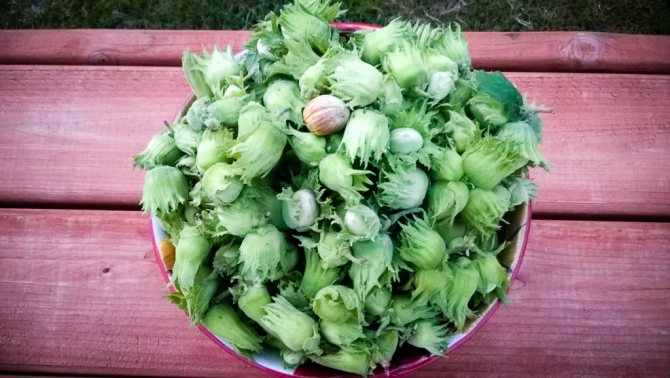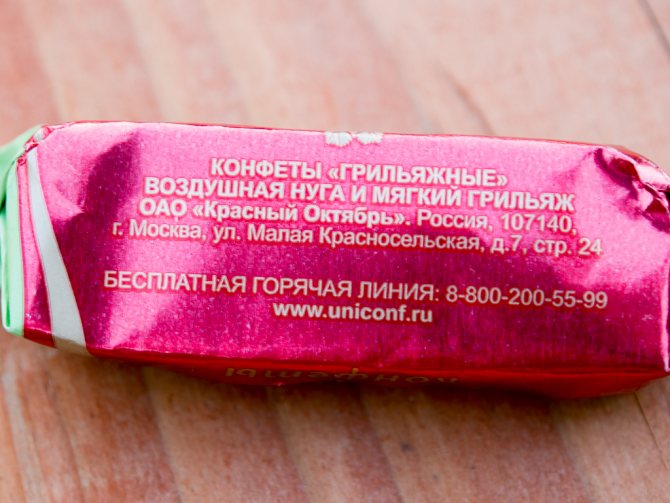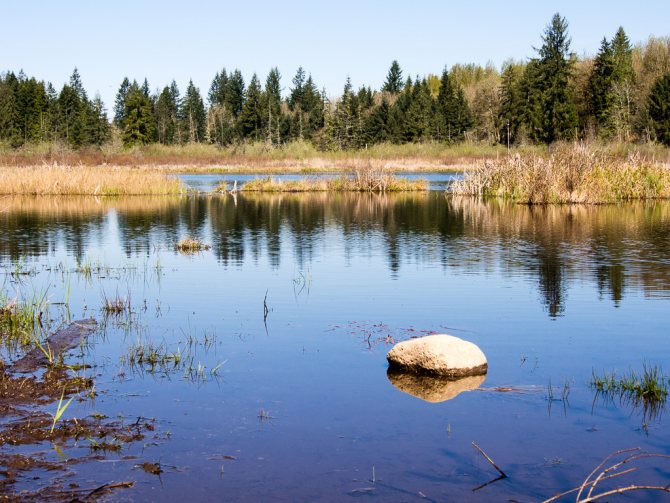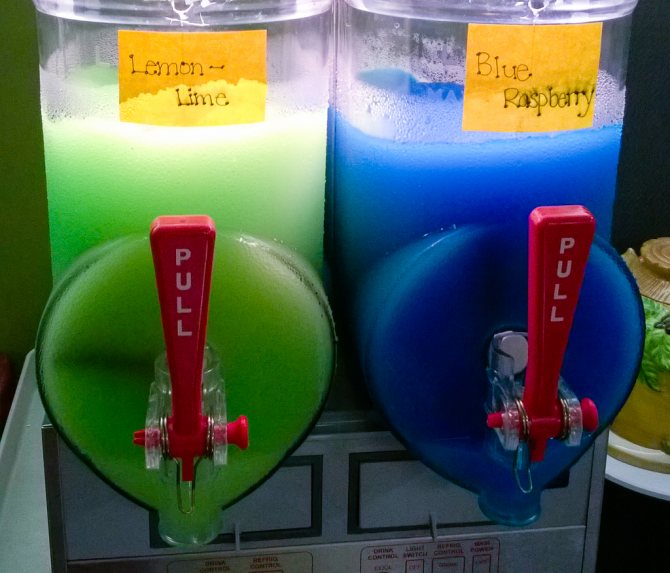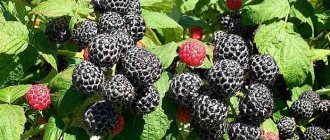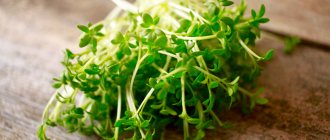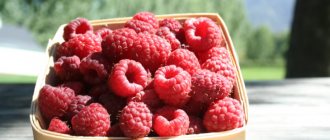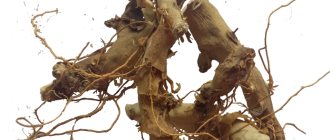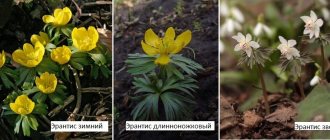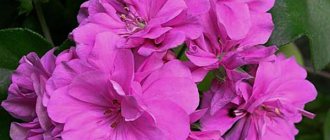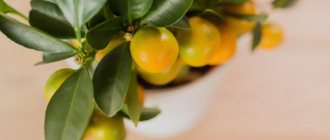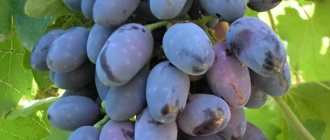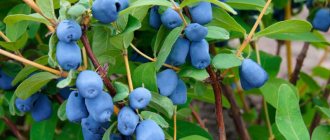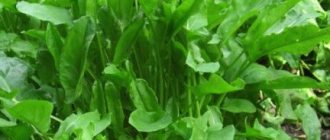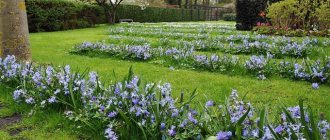Forest raspberry, or ordinary (Rubus idaeus) - plant features, description and photo. Differences from cultivars. The benefits of forest raspberries.
Hello dear reader!
Who knows the forest raspberry? It is very widespread in Eurasia: throughout the forest zone of European Russia and other European countries, Western Siberia. It is found, although less often, in Eastern Siberia. Grows in the foothills and mountains of the Caucasus.
Forest raspberries ripen
Common raspberry (this is the common botanical name for our forest raspberry) belongs to the numerous and varied genus Rubus of the Rosaceae family.
This genus includes the famous cloudberry, the princess, and the stoneberry. And the hop-like raspberry, which looks like a bone, is so called raspberry.
Gray blackberries (and other types of blackberries) also belong to this diverse genus. In general, the genus Rubus (Raspberry) is famous for its berry bushes and dwarf shrubs.
However, from the point of view of botany, these fruits are not "berries".
Place for planting raspberries
Growing a crop will become productive if you meet a number of conditions: Choose a well-lit area for planting raspberries. The site should be well warmed up by the sun, but protected from winds. The bush does not tolerate excessive moisture at all. He doesn't like even short-term flooding.

If you plant raspberries in a damp area, then in winter they can freeze out. The culture prefers highly fertile soil. The best soil is medium-drained loam. If you grow raspberries on sandy soil, then you need to apply abundant organic fertilizers to the soil. Timely watering is especially important.
Productivity with a lack of moisture during the formation of berries is reduced by 3 times.
When choosing a raspberry variety, consider the region in which it will be grown. For warm climatic zones, almost any are suitable, but for zones with dry summers or very frosty winters, stop at drought-resistant and frost-resistant ones. Now it is worth taking care of a suitable landing site:
- For full growth, raspberry bushes need a lot of light, which means try to find a well-lit area. In the shade, raspberries will also grow, but the fruits will be smaller, the timing of their appearance and flowering will shift, as a result, the harvest will turn out to be poor. If the growing conditions are favorable, it can bear fruit for 10-12 years.
- The soil under the raspberry tree should be with a nutritious top layer of about 40-50 cm, since its root system develops horizontally, and not deeply.
- Best of all, if the soil is moderately moist, raspberries do not like too much moisture - this negatively affects its development.
Planting is best done in autumn, in mid-October. Preliminary preparation of the soil consists in clearing the site of weeds, digging and leveling the soil. If necessary, you can add mineral fertilizers or manure. Raspberries grow well on a plot that was used for growing garden crops for two or three years before planting. Their remains can not be removed, but dug up - they will serve as an excellent feeding.
- The material is planted in rows, at a distance of 50-70cm from each other, in pre-prepared pits measuring 30x40cm.
- Do not plant densely - the plants will be cramped, the collection will be more difficult.
- Do not deepen the roots of the seedling, straighten them, sprinkle with earth on top and tamp so that it is stable. Then the "new settlers" should be spudded, watered abundantly.
- It is advisable to mulch (cover) the holes with manure or other organic material, which will protect the seedlings from overheating in summer and freezing in winter.
Perhaps, in the first year after planting, raspberries will not please you with a rich harvest, since they need time to adapt to a new place.
What varieties of remontant raspberries are the best for the Moscow region
Below is a description of what other varieties of remontant raspberries are recommended for growing in the Moscow region.
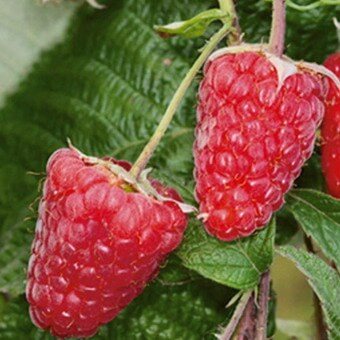

Shugana - one of the best remontant varieties of raspberries for the Moscow region. Its main advantages are large transportable fruits of dessert taste. The berries are dense, bright red in color. This is one of the newer dessert varieties of raspberries. Also suitable for processing into preserves, jams, compotes, etc. Plants have increased disease resistance, high winter hardiness. Fruiting from August to October, on last year's shoots - from July.
Planting raspberries
You can plant seedlings both in spring and autumn. But the soil is prepared in advance, at least two to three weeks before planting. If a spring planting is planned, then it is better to prepare a place in the fall.
There are two ways to plant raspberries.
- At the first, they are planted in separate holes and the plant is grown in the form of shrubs of 8 - 10 stems.
- The second method is to plant seedlings in a trench in one row.
Bushes can grow and bear fruit well for 10 years in one place. Close attention is paid to the preparation of the soil mixture for planting. It is prepared from equal shares of the removed top fertile layer, rotted manure and matured compost. Be sure to enrich the mixture with mineral fertilizers. It is very good to use double superphosphate and wood ash.
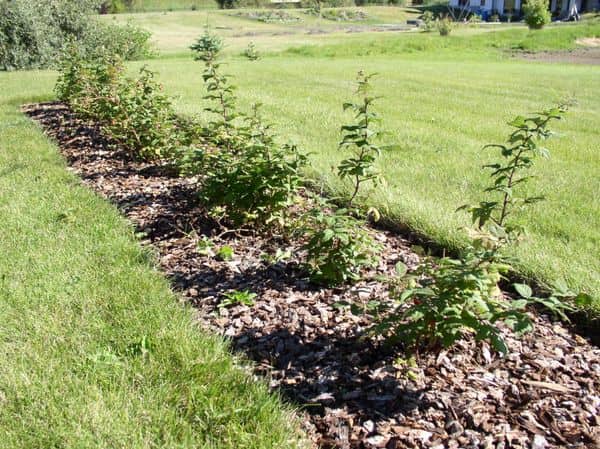

With a separate planting method, planting pits are dug 0.5 x 0.5 m in size. The mixture is poured onto the drainage layer in the center of the pit, so that a small mound is formed. Before planting, the seedling is immersed in a mullein solution for several minutes, and then lowered into a hole on the top of an earthen mound and carefully straightened the roots. Having covered the roots, the soil is well compacted. When planting, it is impossible to deepen the root collar, as the root bud can rot. The location of the root collar at ground level or slightly higher will be optimal.
With the trench landing method, they dig a trench of the same width and depth as the landing pits. They are located at a distance of at least 1 meter from each other, and there should be at least 0.4 m between the plants.
At the end of planting, the seedlings are cut to a height of 0.3 m, watered and mulched. Crushed peat, humus or, in extreme cases, dry soil are used as mulch.
As the raspberry grows, the rhizomes release substances that have a negative effect on the young seedlings. Therefore, you can plant raspberries in this place no earlier than seven years later.
Repaired raspberries require a deeper planting. With a horizontal arrangement of seedlings in the hole and complete cutting of the aerial part after sprinkling with nutritious soil. The rest of the planting points are the same as for regular raspberries.
So that future long stems do not break off and stagger from the wind, they arrange trellises. Strong stakes or metal pipes are dug in along the edges of the ridge, and a wire is pulled between them in two rows. One row is located about 0.5 m from the ground, and the other - 0.7 m. If the trench is long, then additional supports are driven in its middle to avoid sagging the wire. As the shoots reach a sufficient height, they are tied to a wire, distributing them in a fan-like manner.
To limit the growth of the root system, the trenches are fenced off with a barrier made of some rotting material, digging it in to a depth of 30 - 35 cm. Most gardeners use pieces of slate for this purpose. They do the same with separate landings. Raspberry rhizomes annually give many offspring, which can bear fruit the next year. Low neatly dug seedlings are used for propagation of shrubs.
Advantages and disadvantages
Compared to other blackberry-like fruits, raspberries contain more antioxidants. It better removes free radicals that can damage DNA, induce cellular changes, oxidize cholesterol and cause premature aging. It also contains a lot of anthocyanins. These are pigments that give the berry its dark color.
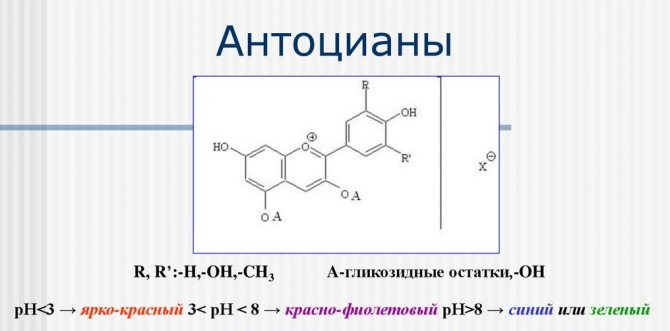

Anthocyanins have anti-inflammatory properties and can improve vision, cardiovascular health, reduce the risk of hypertension, and improve memory.
Blackberries contain a large amount of vitamin C. It is involved in many vital processes in the body, including protein synthesis and the functioning of the immune system. The fruit contains a lot of fiber. It plays an active role in regulating blood sugar levels and helps maintain healthy cholesterol levels.
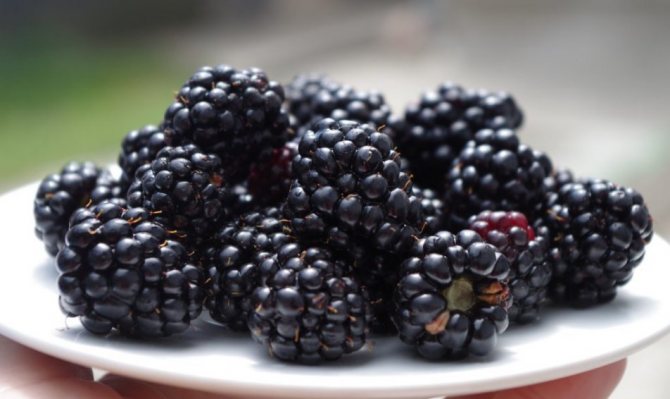

Vitamin K, which is a part of the body, is necessary for the body to "organize" the processes of blood coagulation and wound healing. Vitamin A improves vision, fights infections, and maintains the health of the musculoskeletal system.
Planting raspberries in autumn
In the fall, they begin to prepare the site a month and a half before planting. The earth is dug to the depth of a shovel bayonet, freeing it from weeds and adding 1 square meter:
- m 2-3 buckets of rotted manure;
- 200-400 g superphosphate;
- 100-200 g of potassium sulfate.
Such a dressing will allow you not to apply potash-phosphorus fertilizers to the soil for about five years. The optimal time for planting is late September or early October. Autumn planting is preferable to spring planting, because you can slowly and conscientiously prepare the site, and, in addition, before the onset of frost, the seedlings have time to take root, and in the spring they start to grow rapidly.
Chemical composition [edit | edit code]
Fruits contain up to 11% sugars (glucose, fructose, pentose), traces of essential oil, pectin and protein substances, mucus; vitamins C, A, B; 1-2% organic acids (malic, citric, tartaric, salicylic, etc.), alcohols (tartaric, isoamyl), ketones (acetoin, diacetyl, β-ionone), anthocyanin cyanin, catechins (d-catechin, l-epigallocatechin) ; up to 0.3% tannins [4] [5].
Read also: Disassemble parsley by composition
The seeds contain up to 22% fatty oil [5].
Spring raspberry care
Careful care of raspberries is the key to a bountiful harvest. Erroneous actions of the gardener can lead to poor fruiting of the raspberry tree. Therefore, you need to know some rules for caring for raspberries to help you get a lot of tasty and large berries. The list of mandatory spring work includes pruning raspberries after winter, feeding and treating shrubs from pests.
In early spring, on a fruiting plantation (preferably before the soil thaws), plantings are revised. Remove the damaged and cut out weak stems, cut the bushes. At the end of April, the first fertilizing with nitrogen fertilizers and loosening of the soil are carried out, after which the site is immediately mulched with wet peat. As soon as the soil thaws, tapestries of the simplest design are installed on the plantation of young raspberries of the second year of planting.


At the edges of the rows, to a depth of 0.5 m, pillars with a height of one and a half meters and at a height of up to one and a half meters are buried. 2 rows of wire are pulled, to which the stems are tied up in early spring, and the annual shoots that appear when they reach the appropriate height.Care and cultivation of raspberries are moments that require special attention.
Use these guidelines to ensure a regular and rich harvest:
- Raspberries need rare but abundant irrigation.
- The soil should be moistened to a depth of about 30 cm.
- In dry season, the bush is watered 1-2 times a week.
The soil should be constantly moist and loose. Weeding. The soil should be loosened regularly and the procedure is carried out every time after watering (when the soil is dry). However, during weeding, it is important not to damage the root system, so the loosening depth should be no more than 3-5 cm.
Raspberry care begins with a garter of bushes. This should be done as early as possible in order to have time to carry out all the work before the start of active sap flow. The buds, already ready to open, are easy to break off, and this leads to the loss of part of the crop.
In central Russia, the season for caring for raspberries begins when the snow melts and the temperature is above zero (usually in the first half of April). In the northern regions (for example, in Buryatia), work in the raspberry plant begins later: in late April - early May. The ground is very soft in spring, so be careful not to trample it while working. Too dense soil, especially clayey, interferes with the normal growth of raspberries. Experienced gardeners recommend laying "paths" from boards in the raspberry patch.
Seasonal raspberry care consists of weeding, hilling, feeding, pest and disease control; in arid climates, regular watering is required. Its branches are constantly renewed, the rhizome sprouts new replacement shoots over the summer.
The young offspring gives a crop in the second year after growing up.
During the season, remove excess seedlings, leaving about 7 pieces per bush. Raspberries require care and cultivation, pruning and feeding - these things are inseparable to get a good harvest. In its process, two-year-old, fruiting branches are removed, otherwise it will be weakened and give a noticeably smaller amount of berries, moreover, small ones.
Preparing raspberries for winter
The best time to prepare raspberries for winter is late September or early October. In any case, this must be done before the thermometer has dropped to zero degrees. The preparation of raspberries for winter includes digging and loosening the soil. Also, the bushes should be bent down if there is a risk of freezing raspberries in winter.
Dig up the soil between the rows up to 15 cm between the rows. In the rows, you can dig not so deeply, about 10 cm. It is important to do this carefully and carefully so as not to cut off the skeletal roots. This task can be handled using a pitchfork. When mulching the soil with fallen leaves, peat, straw manure, rotted straw, you can achieve a good harvest, and in the spring it will be easier to work the soil.
The mulch is applied in a layer of 6-8 centimeters. When weeds germinate, they are immediately removed. You can mulch the soil in any area, especially arid, to retain additional moisture.
Before wintering raspberries, all the leaves are carefully removed from the bush.
Caution! Kidneys can be damaged!
Remove old leaves from the bottom up along the shoot. If you leave the leaves, they will damp, rot and "burn" the buds, so you should take time to remove them. The peeled bush is bent to the ground, secured with wire. It is very important to lower the raspberries as low as possible so that they do not freeze and remain under the snow cover.
This is not all preparation for wintering. Raspberries need to be monitored throughout the winter. If necessary, add snow so that the bush is closed. At the same time, the snow crust is removed for better air circulation. Raspberry bushes covered with snow are protected from frost and hares, the latter like to raid their dachas to feast on.
You can additionally protect the plants by adding a layer of straw 20-25 cm thick. To avoid the attack of mice, it is better to take the straw from the compost heap prepared in the fall.With proper care of raspberries in winter, they will survive the cold, frosty months well, retaining most of their shoots. Frozen shoots are removed in spring in order to avoid the development of diseases. You need to have time to do this as early as possible, while the raspberries are still at rest.
Feeding raspberries
Even if you do not forget to periodically add mulch to the raspberry tree, fertilizing with organic fertilizers will not be superfluous, especially in the early years. Infusion of bird droppings is ideal as a spring feeding. 1 kilogram of droppings need to be infused in 10 liters of water for a week, and then diluted 1:10 with water and feed the bushes. A top dressing that consists of half manure infusion and half liquid grass fertilizer works even better. Growing young shoots can be sprayed with a solution of EM preparations at intervals of two weeks. Such spraying serves not only as a top dressing, but also as a prevention of diseases.
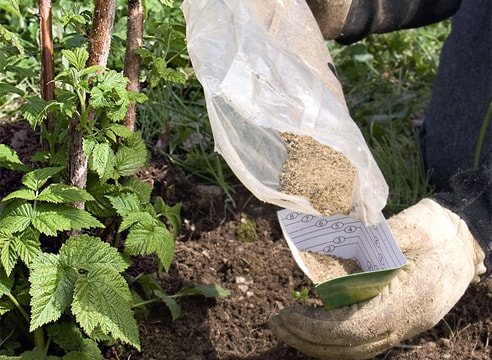

In the fall, you can prepare a special complex infusion for feeding. To do this, fill the barrel 2/3 with grass, weeds, hay or tops, add one and a half glasses of ash, a handful of granulated manure, droppings or vermicompost, one and a half glasses of jam or sugar, 2 school crayons and pour warm water. A small amount of the EO solution can be poured in to speed up fermentation.
After 10 days, the infusion is ready. For feeding, half a liter of such fertilizer is diluted in ten liters of water. If it is not possible to prepare a complex top dressing, it does not matter. Use good old ash infusion. To prepare it during the day, you need to insist 2 glasses of ash in 10 liters of water. Raspberries are fertilized by pouring 3 liters of liquid dressing under each bush.
Tomato tree
A powerful branchy tree covered with tomatoes can be seen in the catalogs of many companies selling seeds. For a long time in this way they advertised quite a common indeterminate tomato hybrid Octopus. The sellers claimed that with sufficient nutrition, 6-12 months after planting, it turns into a spreading tree and bears up to 1.5 tons of fruit per plant. In practice, not a single gardener has been able to obtain such a result.
More recently, under the name "tomato tree", they began to sell another crop - Tamarillo, or Cyphomandra beetroot (Cyphomandra betacea). This is a perennial tree-like plant with ovoid fruits that have a dense, bitter red skin and yellow sour-sweet-salty pulp. They are eaten, added in small quantities to cocktails and smoothies. Unfortunately, in Russia, Tsifomandra beetroot can only grow in greenhouses and winter gardens..
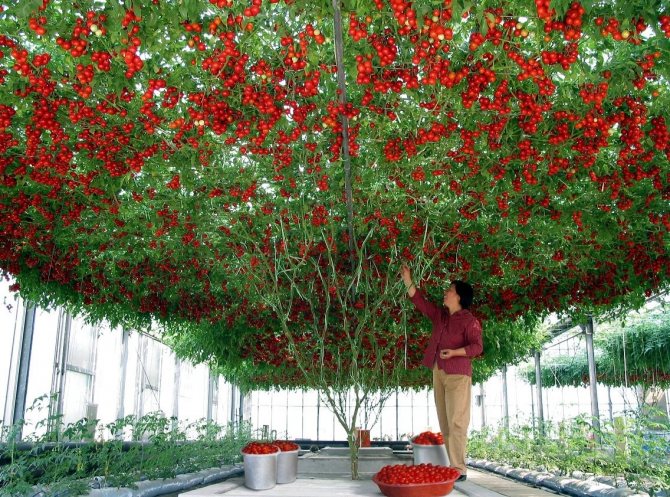

Advertising photos of tomato trees have nothing to do with Russian reality
The desire of enthusiastic gardeners and truck farmers to grow an unusual plant on their site is quite understandable. But in the pursuit of new products, do not forget about common sense and recklessly trust the sellers.
How to fertilize raspberries in spring?
Raspberries need additional feeding, especially if they grow on poor soils. The most important fertilizers for raspberries are nitrogen, potash and phosphorus, but they also like organic ones.
Nitrogen fertilizing is usually applied precisely in spring and summer, since they reduce frost resistance and are not suitable for use in autumn. Lack of nitrogen leads to a slowdown in shoot growth, crushing of leaves and a sharp decrease in yield. The lack of phosphorus is manifested by the weakening of the shoots, and the deficiency of potassium not only badly affects the yield, but also greatly reduces the winter hardiness.
It is best to feed raspberries in spring according to the following scheme.
1. Immediately after the snow melts, even before loosening the soil, nitrogen fertilizers are applied (10-15 g of ammonium nitrate or 10 g of urea per 1 sq. M).
It should be borne in mind that nitrogen fertilizers acidify the soil, and raspberries do not tolerate high acidity.Therefore, experienced gardeners advise, along with nitrogen fertilizers, to bring a glass of ash under each bush. Ammonium nitrate can be replaced with potash: it also contains nitrogen, but does not acidify the soil.
The plants must be well watered before fertilizing. Some gardeners use their own complex top dressing: ammonium nitrate, potassium and superphosphate in a 1: 1: 2 ratio. The dosage is 100 g per 10 liters of water.
2. After loosening the soil, apply organic fertilizers as mulch. It can be humus, peat compost, straw manure, etc.
3. In May, raspberries are fed with mullein, diluted at the rate of 500 ml per bucket of water. Fertilizer consumption is about 5 liters per 1 square meter of planting.
Supporters of exclusively natural fertilizing successfully manage to replace mineral fertilizers with organic
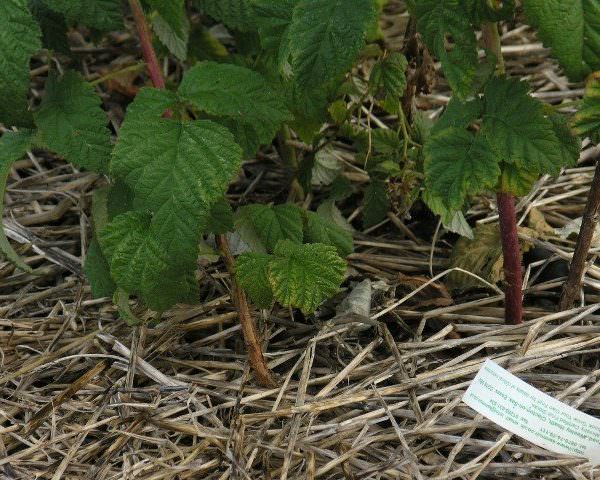

Fertilizers of raspberries without chemicals:
- fresh manure diluted with water 1:10;
- rabbit, goat (1:10) or bird (1:20) droppings;
- tincture of weeds (nettle and comfrey).
For preparation, pour 1 kg of a mixture of fresh weeds with 10 liters of water, insist for 7-10 days with daily stirring. The resulting product is diluted with water (1:10) and fertilized with raspberries at the rate of 2 liters per bush.
Before feeding, dry soil must be properly moistened so as not to burn the raspberry roots; Fertilizer is applied in cloudy, cold weather: the sun and high air temperature lead to undesirable chemical reactions; Work should be carried out very carefully, avoiding the contact of solutions on the leaves and stems of raspberries; Infusions on an organic basis cannot be tightly closed during preparation, they require air access.
Description of raspberry varieties Bryanskoe Divo, Hercules and Eurasia
Bryansk Divo. The bush is vigorous, requires a garter to the trellis.
An amazingly productive variety, with very large, even, bright red berries.
The berries are very attractive, elongated-conical in shape, with an average weight of 8.5 g, individual berries weigh more than 20 g. The yield is high (2.5-3 kg per bush).
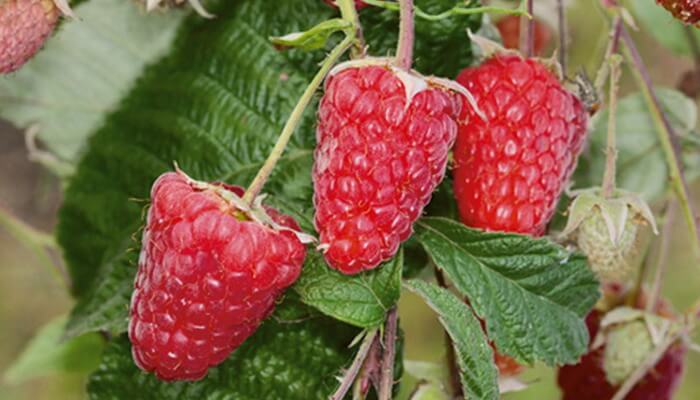

According to its description, the raspberry variety Bryanskoe Divo is closest to the Polka variety. The beginning of berry ripening in the southern region is the second or third decade of July. As a result, by the end of September, almost the entire crop is ripe. Currently one of the most promising varieties.
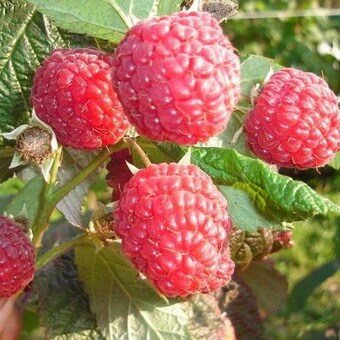

Hercules... Large-fruited, remontant variety with upright shoots that do not require support. Berries remontant raspberry variety Hercules are very large - 5-6 g, maximum 10 g, truncated-conical shape, rich ruby color, dense, transportable. The taste of berries is sweet and sour, refreshing. According to the description, the raspberry Hercules resembles the varieties Eurasia and Giant. Berries are suitable for fresh consumption and all types of processing. Productivity - 1.5 kg per bush. The beginning of berry ripening is the first decade of August.


Eurasia... Repaired straight-growing variety with early and harmonious ripening of the crop. The berries are large (4-6 g), conical, dark crimson, dense, transportable, well separated from the fruit. Ripe berries can hang on the bush for 5-7 days without losing quality indicators. The taste is sweet and sour. Productivity - 2.2-2.6 kg per bush. The description of the Eurasia raspberry variety is similar to the description of the Hercules and Giant varieties. Ripening of berries begins in the first decade of August and lasts for the next two months.
Reproduction of raspberries
As you have already seen, planting and caring for raspberries is a simple matter. Reproduction is just as easy, especially if you know how to do it. We just told you about offspring reproduction. Now we will tell you how to propagate raspberries by cuttings.
Cut in June, in cloudy weather, cuttings 10-12 cm long with two or three leaves from root offspring of two and three years of age, put them in a root formation stimulator for half a day, and then plant them in half a liter containers with a peat-sand mixture under a film keeping the temperature within 22-25 ºC and the humidity level around 90%.
A month later, when the cuttings begin to grow, they are carefully transferred, together with an earthen lump, into a large container - at least 14 cm high and a volume of about one and a half liters.As soon as they take root, gradually begin to accustom them to the outside air, and when they adapt to the external environment, transplant them to a training bed, equipping the cuttings with shading until they become comfortable and start growing again.
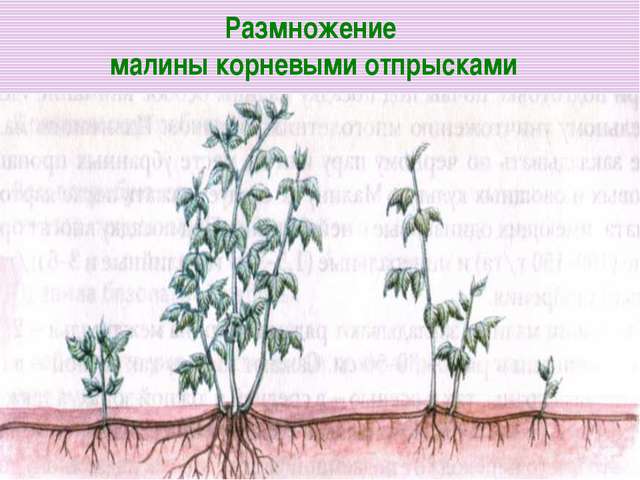

In the fall, plant them in a permanent place. If you cut the cuttings in the fall, treat them with a fungicide for fungal diseases, cover them with peat and place them in the basement, cellar or any other cool place for stratification until spring, periodically moistening the peat. In the spring, plant the cuttings in the garden and mulch the soil around them.
There are types of raspberries that multiply like blackberries - by rooting the top. These include black and purple. When at the beginning of autumn the grown shoot begins to lean to the ground, the leaves at its top become smaller, and it itself takes the form of a loop - it is at this time that it needs to be rooted. Cut off such a shoot along with the "handle", and you will get a planting material that can be rooted using the method already described.
Raspberry-blackberry hybrid
The abundance of raspberry and blackberry varieties is impressive. Many modern plant varieties are thornless, which is convenient for harvesting. But the breeders did not stop only with them and went further, growing hybrids.
Check out
Raspberry-blackberry hybrid Loganberry: characteristics, features of agricultural technology The original development involved California blackberries and Siberian hardy wild raspberries.
The resulting plant was resistant to frost and pests. The first variety is called Loganberry. By the name of the breeder who first bred this plant in 1881.
But it was not he who gave the name to the variety, but the domestic breeder - Ivan Michurin. The reason for the selection was that Logan did not like the existing raspberries and blackberries.
In 1887, the plant was introduced to Europe. And in 1933 its first studless versions were received.
It is impossible to give an unambiguous description for a very simple reason. With subsequent crosses and the development of new varieties, the appearance of the berries depended on the characteristics of the mother plants and could be more similar to raspberries or blackberries. And of course the properties of the plant must be considered in the context of the variety.
Ezhemalina Tayberry
Tayberry is patented by Derek L. Jennings. Developed by the Scottish Horticultural Research Institute in 1979. The plant got its name from the Tay River, which flows in Scotland.
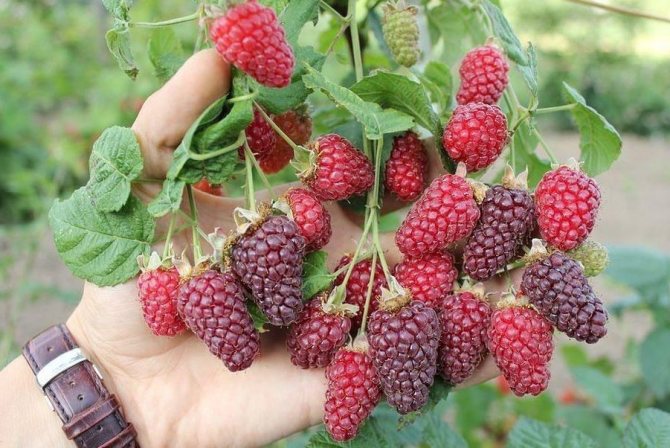

Tayberry fruits are cone-shaped and, when ripe, acquire a red-purple hue. The berry is 4 cm long. They grow on short lateral branches. As with blackberries, when harvested, the receptacle remains inside the fruit. The berry is less acidic than the Loganberry. Berries are eaten fresh, jams, pies and wine are made. The commercial yield of the variety is 27 t / ha.
Important! Jemalina berries are too soft. They cannot be collected mechanically.
The growth characteristics of the shrub are close to those of the blackberry. Tayberry will grow well in most soils. Abundant fruiting is observed if it grows in an open area with constant sunlight. The bush tolerates drought well and is disease resistant. The harvest will be ready for harvest in early July.
Freezing is rarely a problem for shrubs, as Tiberry blooms are quite late. But at temperatures below -26 ° C, the bushes need to be sheltered from frost. The variety shows high resistance to rust and other fungal diseases.
Video: Tayberry variety ezhemalina
Raspberry pruning
An obligatory stage of care is seasonal pruning of raspberries. This is due to the fact that the life cycle of the shoots is two years.After which they die off, and new ones grow in their place. If you do not remove the old shoots, they will interfere with the young, become carriers of diseases.
With timely pruning, you will get a high yield.
The pruning process is carried out in both spring and summer and autumn. In the spring, it is needed to stimulate the growth of raspberries. They accompany her when the snow melts. For this, weak and damaged shoots are cut off with a sharp pruner closer to the ground. In the summer, it is necessary to cut off shoots that have already completed their life cycle.
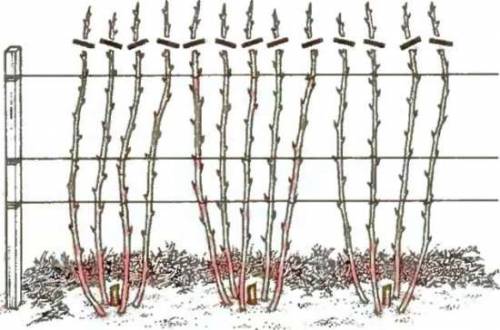

To do this, the woody stems are cut off at the very base. In the fall, it is necessary to carry out sanitary pruning. Cut off damaged and broken stems, as well as shoots that did not have time to gain strength. The remaining branches are tied up and bent down for wintering.
Pruning is also carried out in the fall, after the fruiting period has ended. Each copy is carefully examined, all old, dry and diseased branches are cut off. They are burned to destroy pests and diseases. As a result, young, healthy stems that have grown over the past summer should remain, they are shortened by 10-20 cm and the leaves are removed from them. They will bear fruit next year. If the winters in your region are frosty, the cut bushes are bent down and fixed. Then the snow layer will cover the raspberry tree, and it will not suffer from the cold weather.
In early spring, raspberries are examined, branches damaged by frost are removed, cut to 150-160 cm in height, since their most productive part is the middle one, it is she who gives the largest berry, and the first buds are expected to appear. By knowing all about planting, grooming and pruning properly, you can grow tasty and healthy raspberries on your own. To do this, you will not need to resort to the help of experienced gardeners. Try to do it yourself and see that with a little effort you can do it yourself.
Description of varieties of raspberry Polyana and Firebird
Below is a description of the varieties of remontant raspberries Polyana and Firebird.


Polyana... The variety was bred at the Institute of Horticulture and Floriculture in Bzezne by crossing the varieties Zeva and Heritage. The variety was included in the Register in 1991.
Repaired raspberry variety, powerful and rather short (shoots reach a height of 1.2 m), with high shoot productivity. Straight shoots do not sag at all under the weight of the crop, and the bush does not require any additional support or installation of trellises.
When describing raspberries of the Polyana variety, it is worth noting that the fruiting period for these shrubs is quite extended, and the harvest begins in mid-August and does not stop until the very cold and first frosts.
Berries are medium or large in size, with a wide conical shape. Dense, shiny, transportable berries, dessert taste. Their taste deteriorates only in late autumn.
The variety is susceptible to death of shoots and rotting of berries, resistant to all other diseases.
How to prune raspberries in the spring?
Spring pruning is carried out in two stages. First of all, you need to remove the shoots affected by raspberry stem gall midge. It is possible to detect traces of the vital activity of this pest with the naked eye, especially while there are no leaves on the bushes. Bulges are visible at the bottom of the shoots and stems. If they are cut, gall midge larvae are found.
Damaged, heavily frozen and weak shoots are also removed. Regardless of the form of planting raspberries (bush or tape), thinning is carried out, since the thickening of the plantings has a bad effect on the yield. With a tape growing form, up to 25 stems are left per linear meter, with a bush cultivation - 8-12.


It is advisable to trim the raspberries so that they grow more or less freely, otherwise they will receive little sun and nourishment. Gardeners recommend maintaining a distance of 10-15 cm between the remaining stems.
The second time the raspberries are cut when they start to grow. The tops of the shoots are shortened to the first well overwintered bud.Identifying this kidney is easy: it should be of normal size and color and look as ripe as the rest. Pruning raspberries correctly in the spring will result in greater yields and longer fruiting times.
Care and cultivation
The plant is usually planted in the spring or fall. When planting a plant in the fall, for the winter period it is well spud, and with the onset of spring, it is freed from the ground. On the same site, a bush can grow for twenty years, but it can show its greatest productivity only for twelve years. The size of the harvest is determined by the characteristics of a particular variety, as well as the care taken.
Raspberries love loose soil, do not tolerate drought and stagnant moisture. Culture usually requires a garter on a special trellis. After harvesting, the fruiting branches must be removed, with the onset of spring, the frozen tip of the shoot should be cut off by about 10-14 centimeters, which stimulates the emergence of new shoots. That one-year-old shoot that grows by the end of summer must be removed in view of its uselessness.
As a care, one must remember about timely thinning in early spring. At the same time, 10 to 15 healthy plants should remain on one square meter. Timely pinching of the top of a young stem (before August 15) gives a very good growth stimulus. It is very useful to feed the plant with Azophos, as well as loosening and weeding the earth around the bushes.
Such raspberries can be propagated by root shoots and by root cuttings. Many gardeners recommend, towards the end of summer, digging out raspberry shoots from the rhizome together with the ground and planting it in a specially prepared hole, having previously moistened the soil in it. It is best to do this in cloudy weather. Cuttings are usually harvested by digging out the shoots. They are sorted, collected in bunches, and placed in boxes, sandwiched with peat and sand bedding. Keep cool until spring. Root cuttings are planted in early spring.
Processing raspberries from pests and diseases
The main pests of raspberries are: strawberry-raspberry weevil, raspberry beetle, stem fly and shoot gall midge. Spring is the time to prevent the attacks of these pests. Do not neglect the simplest agrotechnical measures: pruning, cleaning up residues, timely digging of the soil. Weevils, gall midges, beetle larvae winter in damaged or dead parts of the bush and in the soil.
Cleaning the raspberry tree from fallen leaves and dry branches has not only aesthetic, but also obvious practical meaning. Be careful: all damaged shoots removed during pruning must be burned! It is unacceptable to use infected plant parts for compost or other purposes: raspberry parasites will spread throughout the site.
Popular message topics
- Krasnodar Territory minerals
The fertile Kuban lands have been famous for their riches since ancient times. Various minerals, useful waters, mud, flammable substances - all this can be found on the territory of the Krasnodar Territory. - Hat mushrooms
Almost 100,000 varieties of mushrooms are known in the modern world. Mushrooms can be unicellular, but the bulk is multicellular. A separate group among multicellular fungi is made by cap mushrooms. Its name is caps - Bees
Probably everyone knows the funny bear cub Vinnie, who faced a formidable swarm of bees threatening to sting him. And not only this character was scared by these insects. After all, to admit, we are also afraid when a bee flies up to us.
How can raspberries be processed?
Raspberry beetle remedies These insects appear en masse during flowering and destroy buds, flowers and leaves; their larvae feed on berries and are capable of destroying a significant part of the crop.Raspberries are treated from the beetle immediately after the snow melts and the shoots are tied up, abundantly sprinkling the bushes and the ground with Nitrafen solution (200 g per 10 liters of water).
Before flowering, they are treated with a mixture of infusions of marigold and wormwood. To prepare the infusion of marigolds, take 200 g of dry crushed raw materials per 10 liters of water and leave for 48 hours. Wormwood infusion is made in the same proportion, but kept for no more than 2 hours. Then both infusions are mixed and filtered. Good results are also shown by two-time treatment of raspberries with biological products Fitoverm and Agravertin. Spraying is carried out in early May - early June.
Remedies for raspberry gall midge
The larvae of this insect are dangerous. They damage young shoots, cause them to die off or freeze in winter, can contribute to the penetration of the fungus, as a result, the next year's harvest is threatened. Signs of damage by gall midge larvae are characteristic and easily distinguishable growths ("galls") on the stems, destruction of shoots.
To combat gall midge, it is necessary to examine the raspberries as carefully as possible after wintering, if growths are found, cut and burn the affected shoots. In early spring, it is recommended to loosen the soil to a depth of 5-10 cm and spray it with Fufanon (15-20 ml per 10 liters of water). At the stage of bud appearance, raspberries are sprayed with Fufanon (10 ml per 10 L of water, consumption - 0.2 L per bush) or Aktellik (15 ml per 10 L, similar consumption).
Stem fly remedies
This is one of the specific pests of raspberries that affects this particular crop. Fly larvae gnaw the tops of the shoots, which leads to decay and infection. Prevention consists in spring mulching of the trunks. This makes it difficult for insects to leave their wintering places. In early May, before flowering, you can process raspberries with Aktellik, Fitoverm or Agravertin.
Protecting raspberries from disease
Of the raspberry diseases, anthracnose and gray rot are considered the most dangerous. To prevent anthracnose, you can treat raspberries in early spring with Nitrafen solution (200 g per 10 liters of water). At the beginning of bud break, it is recommended to apply Bordeaux liquid (200 g of copper sulfate and 200 g of lime per 10 liters of water).
Gray rot is a fungal disease that thrives in warm and damp weather. It affects leaves and berries. Prevent the appearance of gray rot by spraying raspberries with Bordeaux liquid: in early spring, use a 3% solution, before flowering - 1%. Spraying Fitosporino also helps, ”which can be carried out at any time if the plants show signs of disease. From folk remedies, dusting of the soil with crushed charcoal or ash is used.
What do the leaves, flowers and fruits of common raspberry look like?
Before starting the description of the common raspberry (Rubusidaeus L.) from the Rosaceae family, it will be interesting to know that in the Azov region this plant is called the bear berry. In other areas, its "folk" name is similar to the original: red raspberry, raspberry, raspberry, raspberry, raspberry.
This shrub is widespread in European Russia, the Caucasus, Siberia and Central Asia; wild in forests and between bushes.
What does raspberry look like and what are its distinctive features? It is a perennial shrub, its root is woody, whip-like, twisting, strongly branched, horizontally spreading in the ground, red-brown, fibrous, developing adventitious buds from which aerial shoots grow. Shoots are 2 years old, erect, without edges, covered with thin thorns; in the first year, the shoots are herbaceous.
Look at the photo: in common raspberry, shoots are covered with a grayish bloom and small hairs, are not branched and bear only leaves; in the second year they become woody, covered with brown bark and develop short green branches bearing leaves and flower clusters.
Now check out what the raspberry leaves look like.The leaves of the plant are alternate, petiolar; lower pinnate, upper trifoliate; leaflets ovate or oblong ovate, pointed, irregularly serrate, whitish tomentose; leaf petioles grooved, finely hairy, with thin thorns underneath; stipules linear, pointed, adherent to the petiole.
Pay attention to how the raspberry flowers look, located on long pedicels with axillary or terminal low-color drooping racemes. Raspberry flowers are regular, bisexual, parapestal; pedicels finely haired, covered with thorns. The flower-bed is flat, with a conical elevation in the middle, with fine hairs below. Calyx 5-leafed, emanating from the edge of the flower bed, non-falling; sepals lanceolate, long-pointed, finely hairy on both sides, prostrate at first, but bent back in fruit. Petals - five, emanating from the edge of the root, narrow, obovate, shorter than sepals, white, initially erect, then prostrate, falling after flowering. Numerous stamens, located in 1–2 circles at the edge of the root, shorter than the petals. Numerous pistils, sitting in the middle of the flower on a conical receptacle; each pistil has an oblique-oblong-ovate, downy ovary with one ovule and a naked, filiform, remaining column, ending in a capitate stigma.
Raspberry fruit pendant, rounded, supported by a calyx, easily separating from the conical receptacle, consisting of numerous juicy drupes fused together, single-seeded, obovate, unequal, velvety, red, yellow or white in some cultivars; each drupe bears on its top a withered black column. The stone is hard, oblong-ovate, depressed on one side; the seed is covered with a brownish shell; the embryo is slightly curved.
The shrub blooms in May and June; fruits ripen in July and August.
| Raspberries | |
| Raspberry fruit | |
| Scientific classification |
| Domain: | Eukaryotes |
| Kingdom: | Plants |
| Subkingdom: | Green plants |
| The Department: | Flowering |
| Class: | Dicotyledons [1] |
| Superorder: | Rosanae |
| Order: | Rosaceae |
| Family: | Pink |
| Subfamily: | Rosan |
| Tribe: | Rubeae |
| Subgenus: | Raspberries |
| View: | Raspberries |
The use of raspberries in traditional medicine
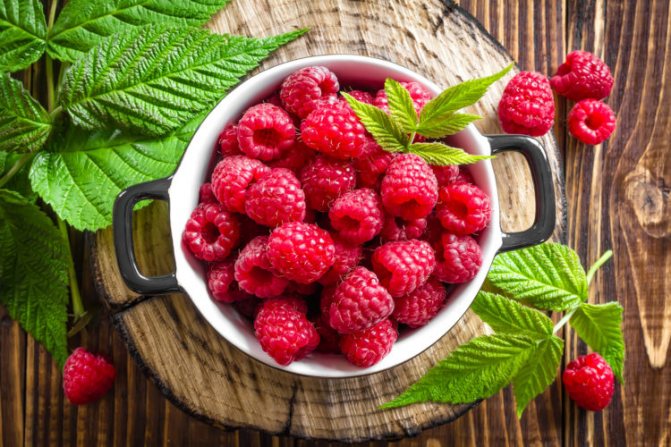

Raspberries contain organic acids (malic, tartaric, citric), fructose, dyes, formic, nylon, ascorbic acids; trace elements - potassium, phosphorus, calcium, iron and magnesium.
Raspberries are an excellent, traditional remedy for colds (decoction, jam, syrup). Drink 2 - 3 cups of raspberry tea at night (4 tablespoons of dry raspberries for 2 cups of boiling water, leave for 20 minutes and drain). As a diaphoretic - drink 2 - 3 glasses of raspberry jam tea (2 teaspoons of jam in a glass of boiling water). Raspberry syrup is added to the medicine for children.
Along with the use of raspberries as a diaphoretic and antipyretic agent, they use its leaves, which have a good astringent effect, for diarrhea and bleeding. A decoction and infusion of raspberry leaves is recommended for colds for the treatment of cough, sore throat, for gargling; infusion of leaves and flowers - for hemorrhoids and gynecological diseases.
Preparations of flowers, leaves and fruits of raspberries are a good anti-sclerotic, anti-inflammatory, antipyretic and vitamin remedy for atherosclerosis, hypertension and colds. Infusion of raspberry leaves (for colds, water) - 2 tablespoons of chopped leaves are brewed with a glass of boiling water, infused for 15-20 minutes, drunk hot. The same infusion is used to rinse the throat and mouth for inflammation of the mucous membrane.
Infusion of raspberry leaves for external use - pour 10 g of dry crushed leaves with 1 cup of boiling water, leave for half an hour and strain.Wipe the skin for acne, rashes, eczema, in the treatment of erysipelas and for lotions on the eyes with blepharitis and conjunctivitis.
For bleeding (hemorrhoidal, nasal) - 1 tablespoon of dry roots is taken in a glass of water. Boil for 10 minutes, leave for 1 hour. Strain before use. Take 1/4 cup 3 times daily after meals.
With purulent otitis media, finely chop the autumn raspberry roots. Pour 2-3 tablespoons of 1 liter of water at room temperature and leave for 12 hours. Drink half a glass 2 times a day for a month. During this time, even old wounds in the eardrum are healed.



